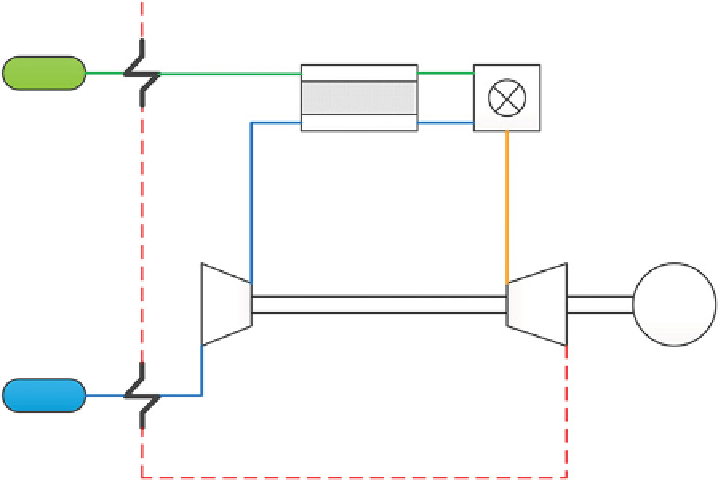Environmental Engineering Reference
In-Depth Information
successfully for 150 h without carbon deposition or significant performance degrada-
tion, as reported by Hofmann et al. (2007). Several other successful gasifier
-
SOFC
experiments have been reported with varying degrees of detail.
In general, gasifier
SOFC experiments have shown that SOFCs can operate with
clean biosyngas and that many of the contaminants can be tolerated to a certain extent.
However, developing the most suitable gas cleaning schemes for a variety of gasifiers
is a highly challenging task.
-
16.3.4 Biomass Gasifier-SOFC-Gas Turbine Systems
SOFCs running on natural gas have an electrical efficiency of 45
60% (Stambouli and
Traversa, 2002). They operate at high temperature and also produce high-temperature
waste heat. Fuel conversion in the FC is not complete, and the unreacted fuel leaving
the cell can be combusted. If the cell is operated at high pressure, the flue gas can be
passed through a GT to extract mechanical energy, which can then be converted into
electrical energy by a generator as illustrated in Figure 16.4.
The first SOFC
-
GT hybrid systemwas installed in the National Fuel Cell Research
Center at the University of California, Irvine (tinyurl.com/o8gl3zq). This installation
succeeded as a proof-of-concept demonstration and determined the operating
windows of the pressurized system running on natural gas. This system has been oper-
ated for nearly 2900 h and achieved an electrical efficiency of approximately 53%,
comparable with the value of 57% presented for the Siemens Westinghouse
-
Heat
exchanger
SOFC
Combustor
Fuel
Anode
Cathode
Generator
Gas turbine
Air
Heat
exchanger
FIGURE 16.4
Schematic view of an SOFC
-
GT system.









Search WWH ::

Custom Search